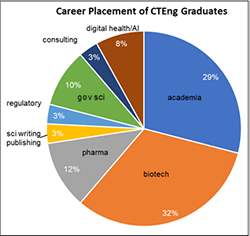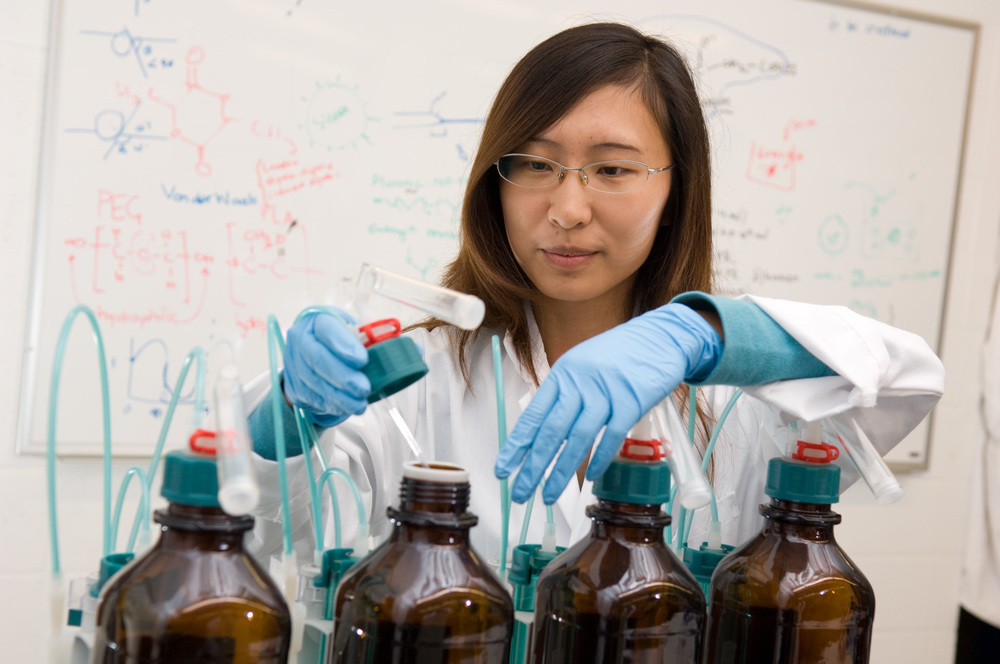The Georgia Tech training program in Cellular and Tissue Engineering (CTEng) is supported by the National Institute of General Medical Sciences, a part of the National Institutes of Health, through grant T32-GM08433. The objective of this biotechnology training program is to provide advanced and integrated training for pre-doctoral engineering students in cell and tissue engineering to develop future leaders for the biotechnology industries.
CTEng supports eight graduate students per year seeking Ph.D. engineering degrees in bioengineering, biomedical engineering, chemical and biomolecular engineering, and mechanical engineering. Our trainees have diverse and strong backgrounds in engineering, mathematics, and the sciences. This training program provides an exciting and rewarding training environment and intellectual community for developing future leaders for the cell and tissue engineering industries.
- Percentage of Trainees Over the 10 Years that Completed Ph.D. Degree: 94.4%

- Average Time to Ph.D. for Students in the Last 10 Years: 5.2 years
- Average number of publications per students graduated from Ph.D.: 5.2
- Percentage of number of URM and student with disabilities in the program and graduated: 64%, 100% of these graduated
- 9 trainees/year—45 trainees over the last 10 years
Why CTEng?
Cell engineering and tissue engineering-based strategies are central to numerous fundamental analyses of biological systems as well as biomedical applications. The full-scale success of these approaches, in terms of a comprehensive understanding of underlying biological mechanisms and the realization of the creative potential of these regenerative medicine approaches, requires the integration of engineering and biology disciplines in order to model, analyze, and control these complex biological systems. Engineers trained in this integrated fashion will provide unparalleled contributions to these fledging fields – not only by carrying out basic research to generate new knowledge but by developing new technological platforms to exploit advances coming out of the biological revolution. Our CTEng training program has been designed to educate such an individual and develop leaders for these emerging biotechnology industries.
What is Cellular Engineering?
The integration of engineering principles and methods with cell and molecular biology approaches to solve basic and applied problems in biology and medicine. Examples: recombinant DNA technology for the production of biopharmaceutics; experimental and theoretical analyses of cellular processes, including adhesion, signaling networks, and differentiation; physicochemical methods for drug/gene/protein delivery; cellular biomechanics and mechanotransduction; engineering of cell function; cell-machine interfaces.
What is Tissue Engineering?
The combination of cells, scaffolds/matrices, and biochemical factors to develop biological substitutes that restore, maintain, or improve tissue function. Examples: biomimetic materials that promote tissue healing; delivery of stem cells in appropriate matrices to restore biofunctionality; natural and synthetic constructs to restore tissue or organ function, such as bioengineered pancreas and liver; living replacements for small-caliber vascular grafts and joint articulating surfaces; in vitro surrogate models to study complex in vivo systems.





